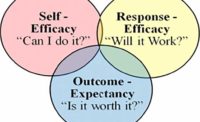
Occupational safety and health management systems (OSHMS) can help you improve safety performance in your company.
Management systems are not, or at least should not, be foreign to you. We use systems in much of what we do and often don't even give thought to the "system" aspect of the process. Let's say that you want to purchase a new piece of safety equipment. You probably start by placing the item in your budget request. If the budget is approved, you then need to get bids. You select from among the bids and put in a request for a purchase order. Purchasing issues the purchase order and you order the equipment.
The process involved to complete this purchase gives you a good idea of one type of management system. Your purchasing function is not redesigned from scratch for each purchase. The process has been developed and fine tuned over the years to ensure that the essential steps are completed effectively.
What is a management system?
A management system allows us to decide what needs to be done. How best to do it. And monitor our progress toward the goals we have established. Evaluation of results over time permits the process and results it creates to continue to improve.Another way to look at this is to follow the "Plan - Do - Check - Act" sequence of events.
"Plan" is the phase of the system where you establish your objectives of the process. This phase should also include getting management support and provisions for employee involvement in the process. Both management support and employee involvement are critical to the success of the overall effort. Your planning phase initiates the system and prepares your organization for implementation.
"Do" is the phase where your plans and processes are actually implemented.
"Check" means evaluate. Are things going according to plan and are you obtaining your desired results? The most important aspect of this phase is identifying areas for improvement. Not surprisingly, auditing is a key part of this phase.
"Act" is the phase where the results of your evaluation are incorporated into the process to generate future improvements in performance.
Systems do not have to be complex to be effective. In fact, simple tends to be better. One of the issues that sometimes generates resistance to management systems is the notion that they are simply producing more paperwork and not accomplishing anything. A poorly designed system can in fact do this very thing. We can get so carried away with forms, checklists, manuals, audit reports, and the like that we lose sight of the true goal, improving safety performance. One measure of the effectiveness of a system should be ease of use. If the front-line people in your organization find the system cumbersome they will not use it.
Without a system to help you handle safety and health issues you must reinvent the wheel every time new issues arise. A systems approach also fine tunes your total approach to safety and health over time so that you get progressively better at making sound risk reduction and hazard control decisions.
Why is there growing talk about management systems?
The easy answer is that they have a positive impact on safety performance. Compliance with regulations will not result in excellent safety and health performance. It is a piecemeal approach where, for instance, your confined space, lockout-tagout, and hazard communication efforts are not necessarily tied together. Using a systematic, unified approach to how you manage all of your workplace hazards and reduce risks can accomplish this.Management systems have been in use to varying degrees overseas for many years. British Standard 8800 was one the the early standards in this area and has been available for many years. A significant number of developed nations have standards in this area including Australia and New Zealand; several from the European Union either have or are working on similar standards. The International Labor Office (ILO) has published a guidance document on safety management systems: Guidelines on Occupational Safety and Health Management Systems ILO-OSH 2001. You can link to the document at: http://www.ilo.org/public/english/protection/safework/cops/english/download/e000013.pdf]
Responsible Care, a program developed by the American Chemistry Council (formerly Chemical Manufacturers Association), is in many ways a type of OSHMS.
The Program Evaluation Profile (PEP) was put forward by OSHA in the mid 1990s and is an example of an auditing tool that incorporates some of the systems approach. More information on the PEP may be obtained at http://www.osha.gov/SLTC/safetyhealth/pep.html.
The American National Standards Institute (ANSI) is working on a U.S. Safety Management Systems standard to be designated Z10. The American Industrial Hygiene Association is the secretariat for the committee. You can watch for developments on this process at http://www.aiha.org/ANSICommittees/html/z10committee.htm.
What's the difference?
A basic safety program usually emphasizes compliance with requirements established by OSHA or other regulators. The biggest flaw in this approach is that regulations are written to generally apply to a wide range of operations and are not specifically tailored to your facility. Regulations also are typically fairly prescriptive about how issues must be handled. Enforcement concerning performance most often becomes an issue after an incident when irrefutable evidence of noncompliance exists in the form of an injured or killed worker.In contrast, one of the foundation elements of an OSHMS is the concept of risk and hazard assessment. It is proactive, not reactive. Your system should allow people involved in any area of your organization to conduct an effective risk and hazard assessment. Part of this process will confirm regulatory compliance, but the primary purpose is to develop a clear picture of overall hazards and risks involved so that effective strategies for eliminating or controlling the risks can be developed.
Another critical aspect of an effective OSHMS is that the primary responsibility for safe performance is placed with the line organization, from employees up through senior management. This integrates safety into the overall business process, which is essential to excellent performance in safety.
Why do I need one?
OSHA does not require many things that may improve your safety and health performance. For example, OSHA did not regulate confined spaces in general industry until 1993. Does that mean there were not any safety issues with confined spaces prior to then? No, all it means is that OSHA did not regulate those issues.OSHA's safety and health program rule, which was proposed many years ago and never really got off the drawing board, is similar to a management system. The primary components of this rule (which are currently found in OSHA's Voluntary Protection Programs) include:
- Management leadership and employee participation,
- Hazard identification and assessment,
- Hazard prevention and control,
- Information and training, and
- Evaluation of program effectiveness.
I believe that our safety performance as a nation would be far ahead of where it is now if this rule had been the first one issued by OSHA back in the early 1970s.
How to sell management
Check out the record of VPP sites, which are far better than industry averages in terms of injuries and cost-savings. Superior safety and health results mean fewer injuries and more money to the bottom line of your organization.
No one in management wants to injure or kill people. But human nature works against using only humanistic sales arguments. People want to believe "it" won't happen to them. So to sell any safety and health initiative we must appeal to the bottom line of the business.
Notes of caution
Three closing thoughts:1) Management systems are not a panacea. I believe that most organizations will benefit from the concepts of OSHMS, but there are some that might need to use a scaled down, less formal approach.
2) The system must not take priority over the performance it is designed to improve. Bureacracy - whether governmental or corporate - can bog down the use of the system and actually inhibit improvements rather than fostering them. You can't let your safety and health management system turn into a paperwork monster.
3) Auditing is not in itself the goal of the process. Instead of audits being used as a tool to foster continuing safety and health improvements, they become the apparent end result and improving audit scores begins to take on more importance than improving safety performance.

